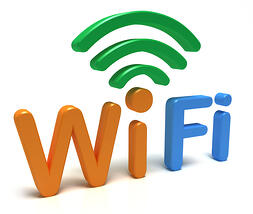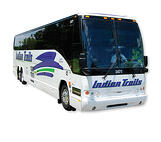How does a bus charter service help you stay connected? The answer lies in technology. Just when you thought you’d heard it all … there is a brand new phobia on the ever-expanding continuum of anxiety disorders. This new phobia plagues its sufferers with a morbid fear of—get this—being without technology. We are not making this up. Atechagoraphobia is real. And someone you love may have it. Actually, you may have it. Ask yourself a few simple questions:
 Do you feel uneasy (or do you actually start to panic) when your smartphone is out of your sight for even a moment?
Do you feel uneasy (or do you actually start to panic) when your smartphone is out of your sight for even a moment?- Does your heart race if you are asked to turn off your mobile device, or if you lose your signal, or if your battery dies?
- Would you hesitate (or even refuse) to go camping, or sailing, or into outer space if you knew you would not have an internet connection while you were there?
If you answered “yes” to one or more of these questions, you may be suffering from Atechagoraphobia. You are not alone. The only known cure is 24-7 connectivity. Fortunately for you, that can be arranged.
Plugged In
Twenty years ago, traveling meant being incommunicado for hours at a time. Everyone understood that to be in transit was to be out of touch. The moment you arrived at your destination—airport, train station, or bus terminal—you and your fellow passengers would make a mad dash for the payphones (remember those?), where you’d fumble in your pockets for a quarter so you could call home or the office.
Ten years later, most payphones had quietly disappeared. Everyone—and everyone’s grandmother—had a cell phone. With wireless technology already in place, it wasn’t long before travelers wanted more. If they could talk and text in transit, why couldn’t they also access e-mail, social media, and the rest of the internet? Wi-Fi “hotspots” started popping up in public places. At first, public internet access was a novelty—and it often came at a price. Today, wireless internet access is a fairly standard amenity, and users expect it to be free. A study by the Chaddick Institute at DePaul University found that the availability of Wi-Fi—or the absence of it—makes a difference to travelers choosing a mode of transportation. Bus companies have responded by integrating mobile Wi-Fi into their fleets so that their technology-dependent passengers can stay connected while they ride.
Wi-Fi in motion

First, some definitions:
- Wi-Fi is high speed internet access that uses a radio signal instead of wires to connect a computer or other device to the internet.
- A Wi-Fi hotspot is a place that has an accessible wireless network.
In the past, hotspots were typically found in coffee shops, airports, hotels, libraries, and other public places. Now buses and trains can operate as Wi-Fi hotspots, too, allowing passengers to access their e-mail, social media, and the World Wide Web while they travel.
Here’s how it works. The bus is outfitted with a modem—which receives data
Security considerations from and sends data to cell phone towers—and a wireless router (or a gateway device that combines the modem and router in one unit). The modem provides access to the internet; the router broadcasts a Wi-Fi signal within the bus, allowing passengers with Wi-Fi-enabled devices to “tune in” to that signal to connect with the internet.
Because wireless networks use radio signals, the data that travels through them can be intercepted. A wireless network is not as secure as a wired network. So users should be careful about passwords and confidential information when communicating over a wireless network.
When bad things happen to good connections
On a bus, internet connectivity is achieved via a cellular connection to a mobile router. Since the onboard hotspot gets its signal from cell towers, it is subject to the same service interruptions and outages as a cell phone would be. The reliability of a moving hotspot is influenced by a number of factors:
- physical obstacles in the environment such as tunnels, mountains, and buildings;
- natural disturbances such as steep hills, deep valleys, and severe weather;
- proximity to the cell tower with which the wireless network is communicating. Ideally, as the bus moves in and out of cell zones, one cellular transmitter hands a connection over to a second transmitter so seamlessly that the user never notices it happening. But in the occasional remote location where no cell tower exists, the internet connection—much like a cell phone connection—is temporarily lost.
The good news is, technology continues to advance – with more cellular networks, higher speeds, and better onboard systems around every bend.
 Still have a touch of atechagoraphobia? Take a deep breath and rest assured: Wherever you go, your electronic universe can ride along.
Still have a touch of atechagoraphobia? Take a deep breath and rest assured: Wherever you go, your electronic universe can ride along.
If you would like to request a quote to charter an Indian Trails motorcoach, we can get you connected! Click below to go to our Request a Quote page. And, have a great trip.


